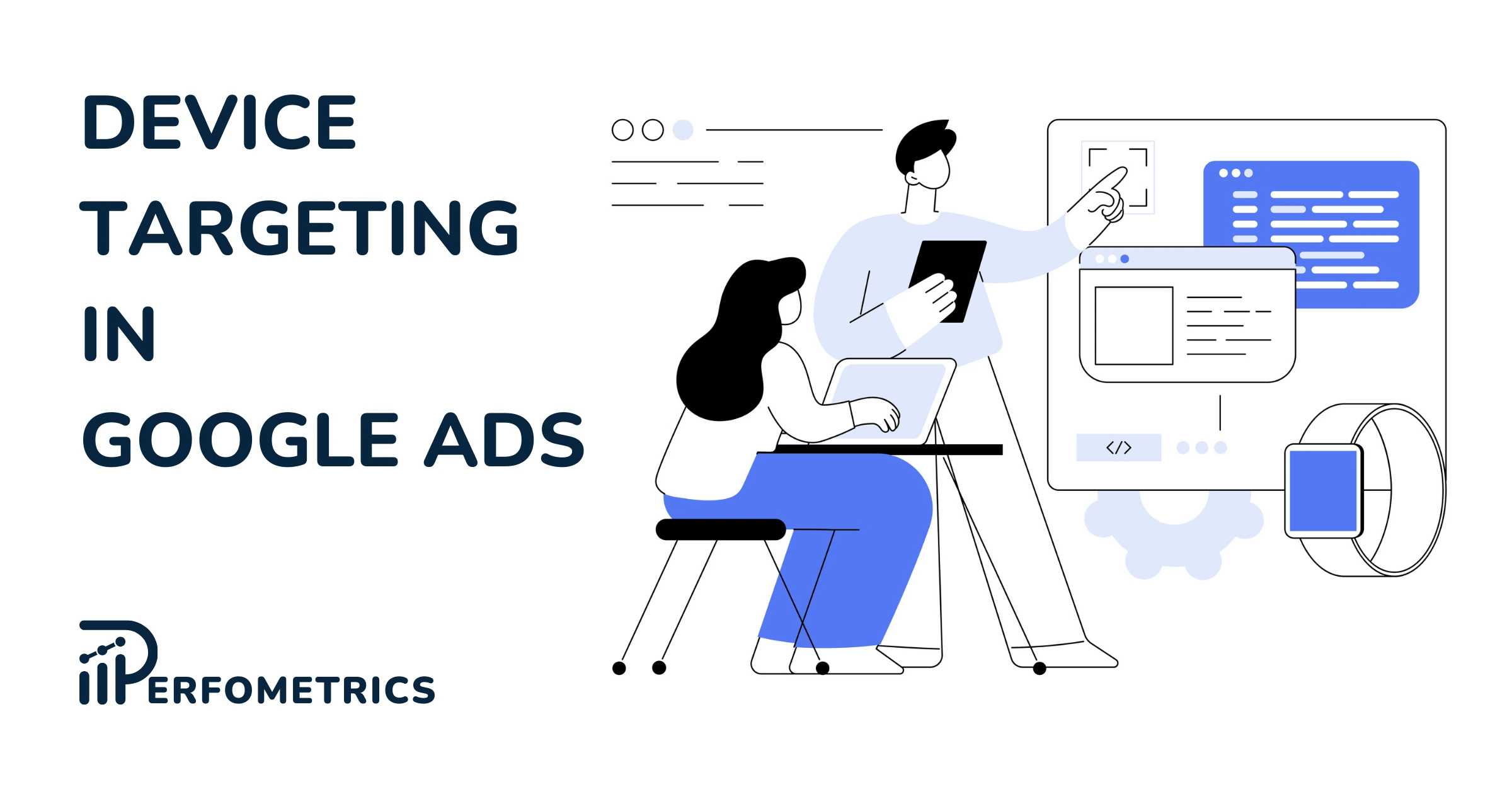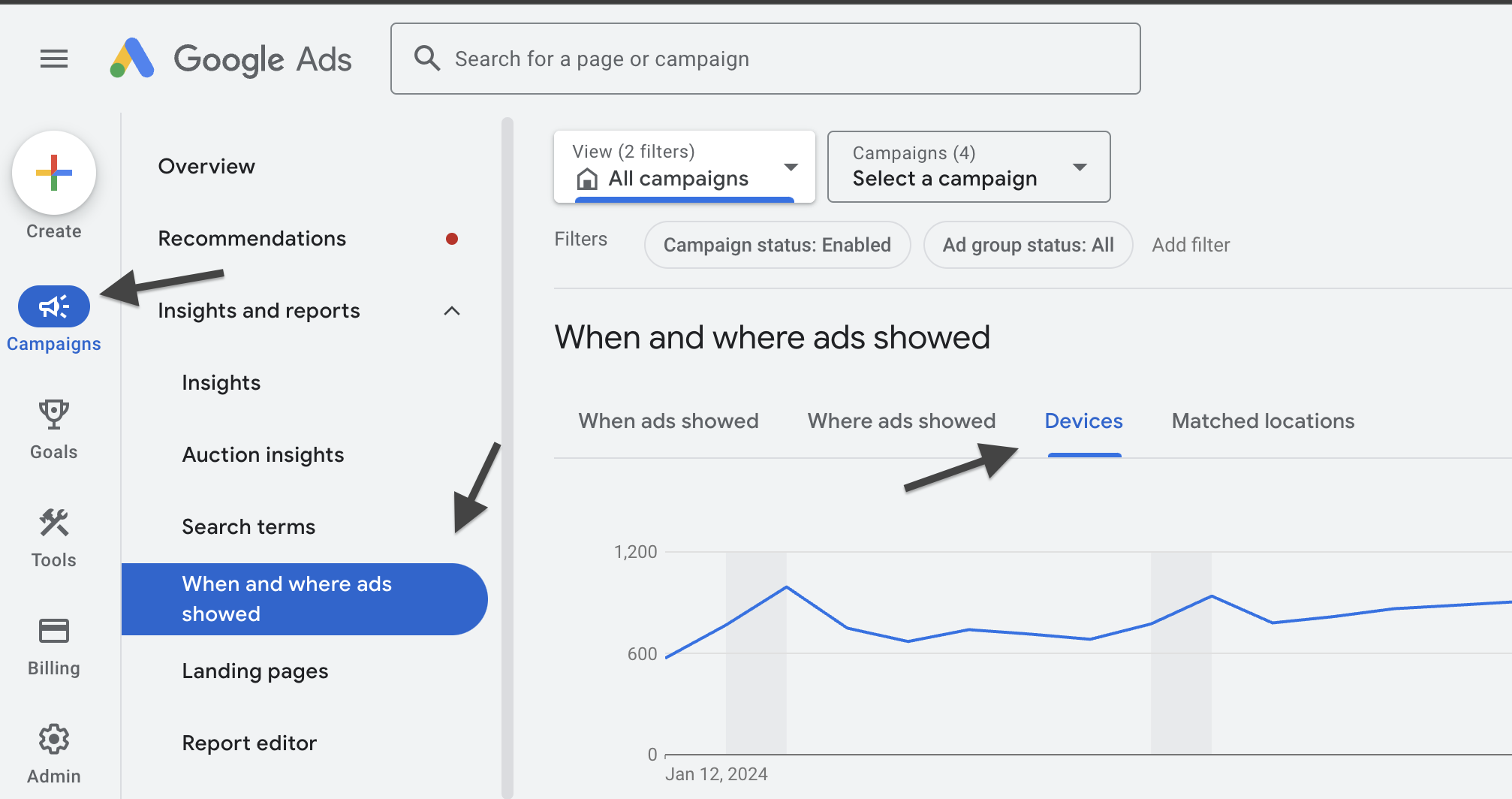Google Ads Device Targeting: A Comprehensive Guide

As a savvy marketer, understanding Google Ads device targeting is critical for the success of your digital campaigns. it’s important to stay updated on the latest device targeting settings. Whether you’re a seasoned professional or new to the platform, grasping the device targeting best practices can significantly boost the device targeting performance in your Google Ads.
Embrace the power of Google’s sophisticated system that allows for unparalleled precision in device targeting. By leveraging the array of settings Google Ads offers, you can ensure that your message reaches your audience on their preferred devices. With strategic device targeting, you can capitalize on the increased effectiveness of your ads, resulting in improved ROI and campaign outcomes.
Key Takeaways
- Reach the right audience: Deliver ads to users on their preferred devices for better engagement and conversions.
- Integrate with your overall marketing strategy: Google Ads device targeting is just one piece of the puzzle.
- Consider emerging devices: Smart TVs and wearables might be relevant.
- Multi-device journeys: Users might use multiple devices to purchase, so don’t exclude any single device prematurely.
- Dive deep into data: Regularly review and adjust campaigns based on data. Dive deep into audience behavior and device preferences.
- Don’t stop learning: The digital landscape is constantly evolving, so stay updated.
Understanding Google Ads Device Targeting
Today, an increasing number of users switch seamlessly between smartphones, tablets, TV screens, and desktops, and the decision-making of the user becomes even more complex, therefore the ability to target your audience by their device is a fundamental aspect of any successful Google Ads campaign.
By honing in on device targeting in Google Ads, you can tailor your messages to align with the user’s context and preferences, potentially increasing your advertising efficacy.
What is Device Targeting in Google Ads?
Device targeting in Google Ads is a powerful feature designed to optimize your advertisements for different devices, such as smartphones, tablets, and desktop computers. It enables precise delivery, ensuring that your ads connect with consumers at the right time on the right device.
Each device serves a different purpose in a user’s day. Smartphone users may seek quick answers or local services, while desktop users may be in for more in-depth research or purchase processes. Crafting device-specific campaigns ensures that you’re not just present, but also pertinent, in your potential customers’ lives.
What are the Different Device Targeting Options in Google Ads?
The different device targeting options in Google Ads include targeting by device type (computers, mobile phones, tablets, TV screens), operating systems (Android, iOS), specific device models, mobile carriers, and connection types (Wi-Fi, cellular networks). You can also adjust bids for different devices to optimize performance.
| Device | Campaign Type | Description |
|---|---|---|
| Computers | Search, Display, Video, Shopping, Discovery, Gmail | Target desktop and laptop users with screens larger than 7 inches. |
| Mobile | Search, Display, Video, Shopping, Discovery, Gmail | Target users on smartphones and other handheld devices. |
| Tablets | Search, Display, Video, Shopping, Discovery | Target users on tablet devices. |
| TV Screens | Display, Video | Target users watching content on smart TVs, gaming consoles, and connected devices (Chromecast etc.). |
Understanding the basics of Google Ads device targeting is just the first step. As you proceed through the nuances of craft targeting strategies, keep in mind that your ads should resonate with users across all devices, while taking advantage of the unique capabilities and user behaviors each one presents.
Setting Up Device Targeting Campaigns
Embarking on the journey of device targeting within Google Ads is a strategic move to fine-tune your ad campaigns for diverse audiences. It is essential to learn how to target devices in Google ads to ensure your marketing efforts speak directly to users on their preferred devices.
Whether it is a smartphone, tablet, or desktop, tailoring your approach can lead to more effective and efficient ad performance.
Navigate to Device Targeting in Google Ads
- Sign into your Google Ads account.
- Select the campaign you wish to modify.
- Under ‘Insights and reports’ click on ‘When and where ads showed’.
- Then navigate to ‘Devices’.
- Here you’ll see a list of device types: Computers, Mobile phones, Tablets, and TV Screens, depending on the campaign type.
At this stage, you can observe the campaign or ad group performance based on each device type.

Adjusting Bids by Device Type
Adjusting your bids by device type is a pivotal aspect of device targeting strategies in Google Ads. It allows you to allocate your budget in a way that takes advantage of the varying conversion rates that different devices might present.
For instance, if you notice that your ads on mobile phones have a higher conversion rate, it could be wise to increase your bids for that device type. Conversely, if tablets have a lower conversion rate, reducing the bid for that device might be more cost-effective.
However, bid adjustments are more limited when using automated bidding strategies such as Target CPA or Maximize conversions value.
💡 For more, read: device bid adjustments with different bidding strategies.
Important Points to Consider about Device Targeting in Google Ads
Navigating the landscape of Google Ads targeting options requires a keen understanding of various best practices. In this section, we delve into strategies that can amplify your success with device targeting best practices in Google Ads. Acknowledging the complexities of today’s device-diverse market is essential for tailoring your campaigns effectively.
Best Practices for Google Ads Device Targeting
- Start broad, then refine: Begin with targeting all devices to gather data on performance across different platforms. Analyze click-through rates (CTR), conversion rates (CVR), and cost-per-acquisition (CPA) for each device. Use these insights to refine your targeting based on which devices drive better results.
- Conversion tracking is indispensable: Whether they make a purchase, sign up for a newsletter, or download your app, tracking conversions is crucial for measuring success across different devices.
- Be mindful of exclusions: While excluding certain devices can be helpful, use it cautiously. Excluding all tablets might miss valuable potential customers, especially if your product caters to both mobile and tablet users.
- Don’t forget about emerging devices: As smart TVs, wearables, and other devices become more popular, consider their potential reach and how they fit your target audience.
Challenges with Device Targeting in Google Ads
- Missing out on multi-device journeys: Consumers often switch between devices during their purchase journey. Targeting just one device might miss valuable touchpoints and conversions. Targeting specific devices can significantly reduce your potential reach, especially if you exclude popular categories like mobile or desktop.
- Multi-touch attribution complexity: Attributing conversions to specific devices can be challenging when users interact with your ads across multiple devices.
- Incomplete data: Google Ads may not always have accurate device information, leading to potential targeting errors and misattribution of conversions.
- Limited availability: Some advanced targeting options like operating systems and models might have limited availability depending on your campaign settings and location.
Remember, the best device targeting approach depends on your specific campaign goals and audience. By understanding both the benefits and challenges of device targeting, you can make informed decisions to optimize your Google Ads campaigns.
Google Ads also offers ad customizers that can dynamically alter your ad text based on various factors, including the device type. This means you can create a single ad that adjusts itself accordingly, saving you time while ensuring consistency across devices.
How Device Targeting Fits into Your Marketing Mix
Device targeting isn’t just about choosing platforms; it’s about understanding how it fits into your overall marketing strategy. A successful Google Ads campaign considers how customers interact with different devices, tailoring content and engagement accordingly.
It creates touchpoints throughout the customer journey, connecting with your audience wherever they are and delivering relevant messages that drive action. This ultimately leads to a stronger, more consistent user experience across all channels.
Conclusion
In short, device targeting is a powerful tool, but it’s most effective when integrated into a comprehensive marketing strategy. By understanding how devices work together, you can create a cohesive and impactful campaign that resonates with your audience.
Regularly reviewing your campaigns to implement device bid adjustments in Google Ads based on clear-cut analytics will sharpen your marketing edge. Mastery in Google Ads device targeting does not rest at the surface, it’s about diving deep into data, understanding your audience’s device behavior, and crafting campaigns capable of capturing their attention in a bustling digital world.
💡 For more, read: location targeting in Google Ads.



